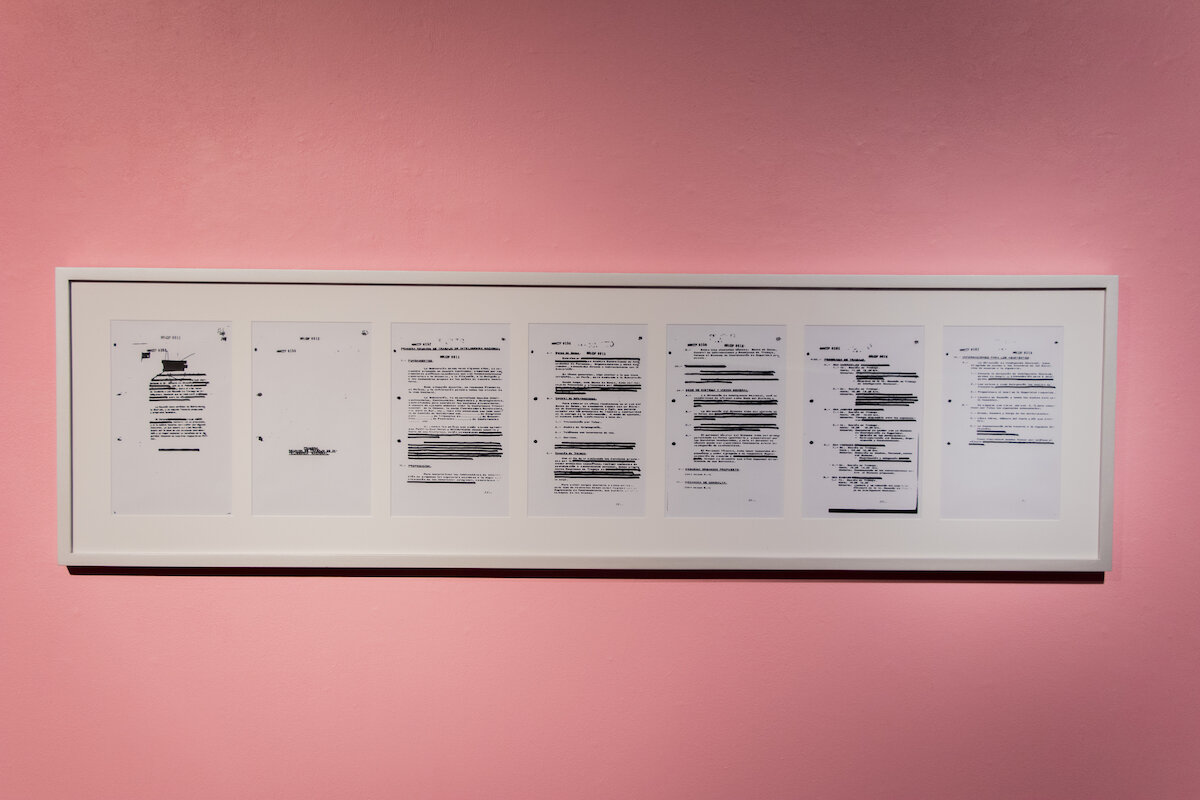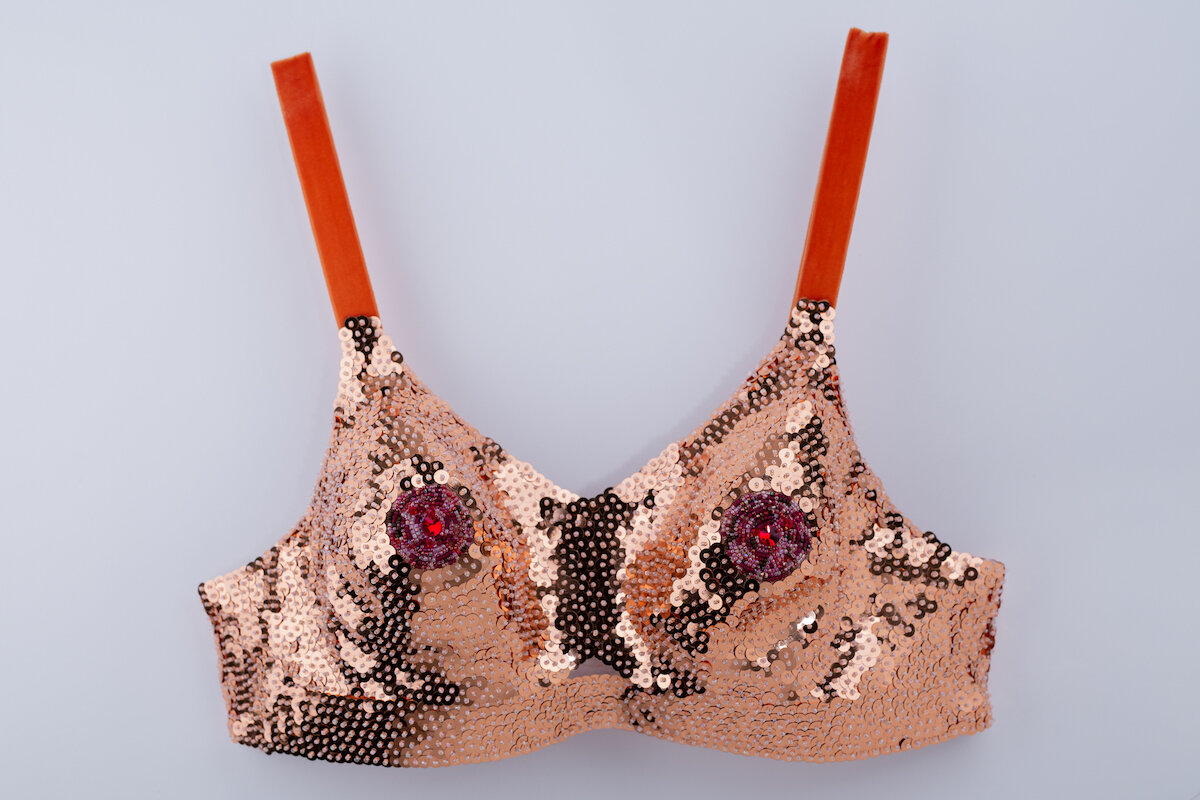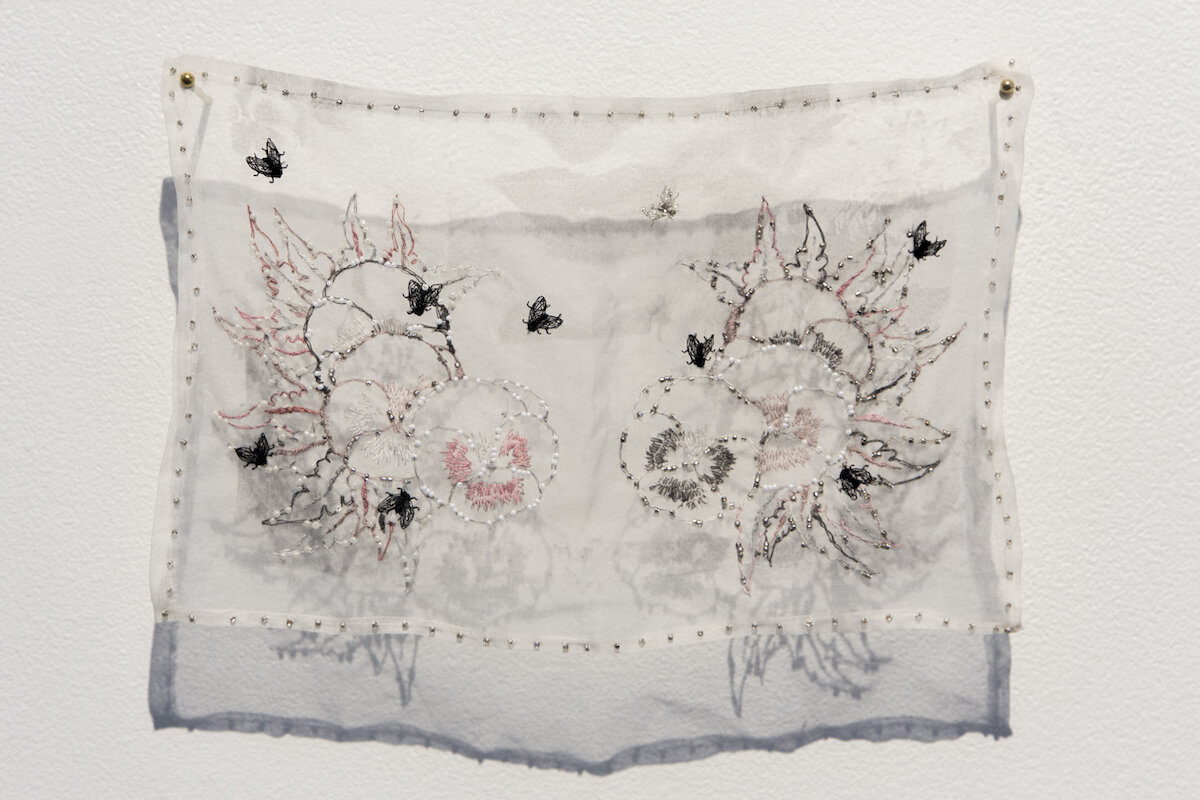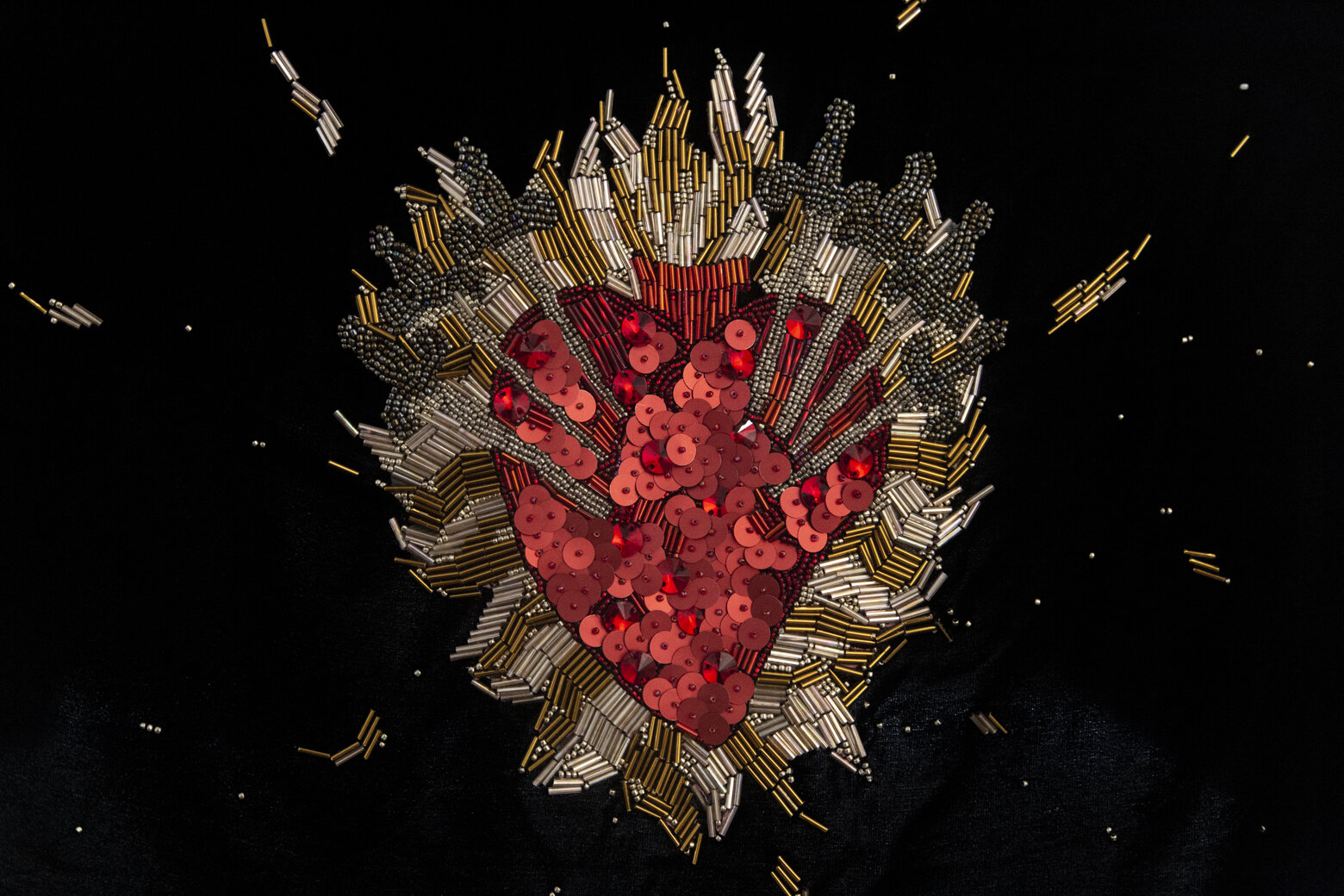Portrait of Juan José Castaño-Márquez.
Juan José Castaño-Márquez
Juan José Castaño-Márquez is a Colombian-born artist based in the United States working in visual biomythography, photography, performance, video, and new media arts. through art, he explores contemporary issues on historiography and archivization, as well as personal identity. Some of Juan's projects directly engage with ideas of representation of "the other"–this other being both brown and queer; historical erasure; and situations of victimization in his country of birth. His work has been published and displayed online as well as in magazines, universities, galleries, and alternative art spaces in London, England; Cambridge, Massachusetts; Medellín and Bogotá, Colombia: Kansas city, Missouri; Lawrence, Kansas; and Gatlinburg, Tennessee. Juan received his bachelors of foreign commerce from the Universidad Católica de Oriente in 2011 and his associates of photography from Academia Yurupary in 2015 – he earned his MFA in visual art with an emphasis in expanded media from the University of Kansas in May of 2018. Castaño-Márquez is currently assistant professor of digital media at Nebraska Wesleyan University in Lincoln, Nebraska.
Juan José Castaño-Márquez
Questions by Andreana Donahue
Can you tell us a bit about your background and where you grew up? In what ways have your early visual experiences and personal history led to art-making?
I was born into a family that cares about and for its history and memories. For the last five decades, my family has told the histories of our past because it helps us to imagine that we are better—richer, smarter, and more interesting. The reality of our situation has never been important. Our lack of wealth, for example, has been metaphysically transformed into a ‘temporary’ situation by the act of repeating the stories of my much wealthier ancestors. It does not matter that the last two generations did not experience the wealth of the past. Or that those same generations have, by now, made and lost their own fortune. We continue talking about our family’s legendary wealth, trying to believe that we could never be ‘new money.’
I was raised with the help of my grandmother–a remarkable woman who took it upon herself to educate me into a better man by means of telling me the stories of all the good men in my family as an example. And all the bad ones as a warning. It is a tradition of my family for men to leave and to refuse to take responsibility for those they love–for women to find men who do this. All the good men die before it is their time. Thus, the strongest presences in my life were the memories, once removed, of absent men–and the present women who remembered them.
But my grandma didn’t only keep memories. She kept the evidence of the existence of all those men –both gone and dead– in her mother’s chest, under her bed. It was an old, black chest that time had worn out until it cracked open. The inside was lined with old wrapping paper, in an attempt to create a beautiful, maybe happier surrounding for the treasures it contained. The treasures were odd. They were not just the vessels that contained the memories she had embedded in them by means of her desire–they were the evidence of all the absences and loses she had suffered throughout her life.
Amongst many photo albums, letters, and other objects more traditionally connected to the acts of recording memory, she kept my uncle’s adult teeth–which he lost in the accident that took his life—standing in for the ones he lost as a toddler and she forgot to collect. She kept her mother-in-law’s missal and shawl, though she was never a religious woman and was better known for having fled a convent in her youth to join the circus and travel the world. She kept her father-in-law's handkerchiefs–soaked in the dry sweat of his deathbed, when a heart attack took him before he could finish his life’s greatest achievement: tracing the path between the two biggest cities in the country.
I was always fascinated by my grandmother’s collection of specimens. More than an archive of memories, they constituted a reliquary of mythological evidence. The only testament of the fantastic lives of the most eminent members of my family–those whose lives I would have to reckon with at some point in life.
Where are you currently based and what initially attracted you to working in this community? Are there any aspects of this place that have surfaced in your work?
I am currently based in Lincoln, NE. I came here about a year and a half ago because of a job opportunity with Nebraska Wesleyan University, where I am currently Assistant Professor of Digital Media. As of now, this particular community has not made it into my work. What has actually had a great impact in the ways in which I make work and see myself as an artist -and as a person- has been living in the States. Moving to Kansas about five and a half years ago to attend graduate school at The University of Kansas changed my world, both literally and intellectually. I won’t go into any details about the impact being an immigrant in the Midwest had in my everyday life, but I will say that becoming a visible ‘other’ changed the way in which I perceive the world and has affected my interests and my work forever.
Can you tell us about your studio and what a typical day is like for you? Do you share space or ideas with other artists while working, or is it a more solitary routine?
A typical day for me starts with 20 minutes of reading and 20 minutes of writing, every day, right after I wake up, and before even getting a cup of coffee. After that, I will usually check my phone and my email to make sure the world is still running and catch up with the gossip I might have missed from the previous night. If I teach in the morning, this is usually when I take a shower and get ready to go to school. If I don’t teach in the morning, however, I will embroider for a good 30-40 minutes while I drink my coffee. After that I will review my schedule and either work in the studio for a little while or work on class-prep. I have a studio at school, where I basically make all the messes and a little nook at home where I like to only work on embroidery or ‘dry’ stuff [photo/video-editing, writing, etc]. After class, I’ll usually stick around campus for a couple more hours and then go home to relax and read a little bit more before watching TV and decompressing for the night. On the weekends, I usually take the time when I’m not teaching to have longer studio hours.
What criteria do you follow for selecting materials? Do you prefer to maintain a narrow focus or work across diverse media? How do you navigate the limitations and possibilities that result from this path?
I’m obsessed with meaning and poetry–which are the main two aspects I analyze before committing to any specific material/medium I use in any of my pieces. I have always been in love with textiles, and they lend themselves perfectly to the ideas of memory, history, queerness, resilience, and ingenuity I explore in my work. In addition to this, photography and video have always been linked to history-keeping and truthful documentation of important narratives–which are ideas I question through my work as well. I love the endless possibilities that come with understanding materials and media in terms of their communicational power.
Can you walk us through your overall process? How would you describe your approach to manipulating materials? What about decision-making and editing?
For the last four years, my research has centered around representations [and lack thereof] of queers of color in institutions of meaning [and power] like museums, archives, and academia. Through my work, I appropriate strategies utilized to create meaning by those institutions to question their perceived authority. At the same time, I aim to queer these strategies by hybridizing them–through a combination of media with [perceived] authority like photography, surveillance video, and writing, and media that has always been linked to society’s margins like textiles and oral storytelling. As I stated before, I am obsessed with meaning and poetry, so I also try to affect and manipulate materials in a way that either communicates other ideas about the work or reinforces the overall concepts in the work.
Can you talk about some of the ongoing interests, imagery, and concepts that have informed your process and body of work over time? How do you anticipate your work progressing in the future?
I am fascinated by instances of ‘canonized mythologies’ like religion–particularly instances in which said mythologies have been used to exert oppression over a group of people. This is why I am obsessed with Catholic imagery–particularly the idea of the Virgin Mary. I have also been embroidering masks for ‘when one ought to be dead’ for about three years–but after all the social unrest and ongoing protests around the world centered around racial equality, I have started embroidering ‘protest masks’ that would still ‘make one pass as being dead while fighting and protesting.’
Do you pursue any collaborations, projects, or careers in addition to your studio practice? If so, are there connections between the two?
I do! I have been collaborating with different artists since I started making art myself. My collaborative interests are quite varied and stem from larger interests I have in life–from collaboratively creating works for exhibitions based around ideas of friendship and collaboration, to curating two-person shows around the overlapping themes in both mine and the other artist’s work. For my latest collaboration, I have been producing and co directing an e-conference that deals with the theme of horror through different perspectives such as queerness, race, gender, and religion among others. It has been an incredible opportunity to collaborate with people in academia as well as people in the horror industry to create a spine-tingling event!
As a result of the pandemic, many artists have experienced limited access to their studios or loss of exhibitions, income, or other opportunities. Has your way of working (or not working) shifted significantly during this time? Are there unexpected insights or particular challenges you’ve experienced?
I have been very lucky to be in academia and get to keep my job and income throughout the pandemic. I have also been super lucky that the exhibitions I was participating of have been postponed instead of cancelled. The main challenge I have experienced, mostly because of my job as a professor, is definitely a lack of time, since everything seems to take at least three times longer. Especially in the classroom. So that has limited my studio time and my ability to commit to certain, more time-consuming processes.
In a time that seems to be marked by uncertainty, collective anxiety, and increasing social unrest, why do you think the perspectives and contributions of artists remain meaningful? Do you feel a natural relationship exists between your work (or the role artists play more broadly) and confronting established systems - of power, cultural institutions, or otherwise?
My work challenges power and cultural institutions directly. Through it, I aim to understand the way in which my body exists in institutions of meaning like museums and archives, and for that I create works that reference those institutions to question their perceived authority.
Letanía (excerpt from an artist book), 2014/2020. Xerox print, 13” x 17”
Can you share some of your recent influences? Are there specific works - from visual art, literature, film, or music - that are important to you?
So many! Chavela Vargas, Julio Cortázar, Marguerite Yourcenar, José Esteban Muñoz, Sharp Objects, Seth Bogart, Joshua Chambers-Letson, and many, many, many more…
Who are some contemporary artists you’re excited about? What are the best exhibitions you’ve seen in recent memory?
Also so many! Zulfikar Ali Bhutto, Mimi Haddon, Pissy Pussy, Willemien De Villiers, Shalva Nikvashvili, Muriel Nisse, Magnhild Kennedy, Bcalla, Faye Moorhouse, Peter Clough…
What are you working on in the studio right now? What’s coming up next for you?
I am currently working on too many things, as usual! I have a couple of solo exhibitions coming up in the spring and I am in the development stages of the works for both shows. One of them, will feature a collection of ‘fallibles’ [a term I use for the wearables I create because they propose a certain performance or a certain action, but they are deliberately made to fail because of the materials or techniques I am using.] The second exhibition will feature a photobook, images from it, and a multi-channel video/installation that tells the stories of the people in my work.


![untitled 2 [to build the self a body]](https://images.squarespace-cdn.com/content/v1/5549572be4b0e5e3121cf063/1608660502087-IUFHXPXC1TMOE4UYRXCW/work_sample_12untitled_2_to_build_the_self_a_body.jpg)
![untitled [a place for when I'm feeling lonely] ,2018](https://images.squarespace-cdn.com/content/v1/5549572be4b0e5e3121cf063/1608660501064-FWYCTH4R695K8V7FA84I/work_sample_2untitled_1_a_place_for_when_im_feeling_lonely.jpg)

![untitled [a mask for when I ought to be dead]](https://images.squarespace-cdn.com/content/v1/5549572be4b0e5e3121cf063/1608660501881-974OJFFRZQWD6IITHYDC/work_sample_9untitled_7_study_for_a_pansy_mask_%E2%80%93_a_mask_for_when_i_ought_to_be_dead.jpg)





